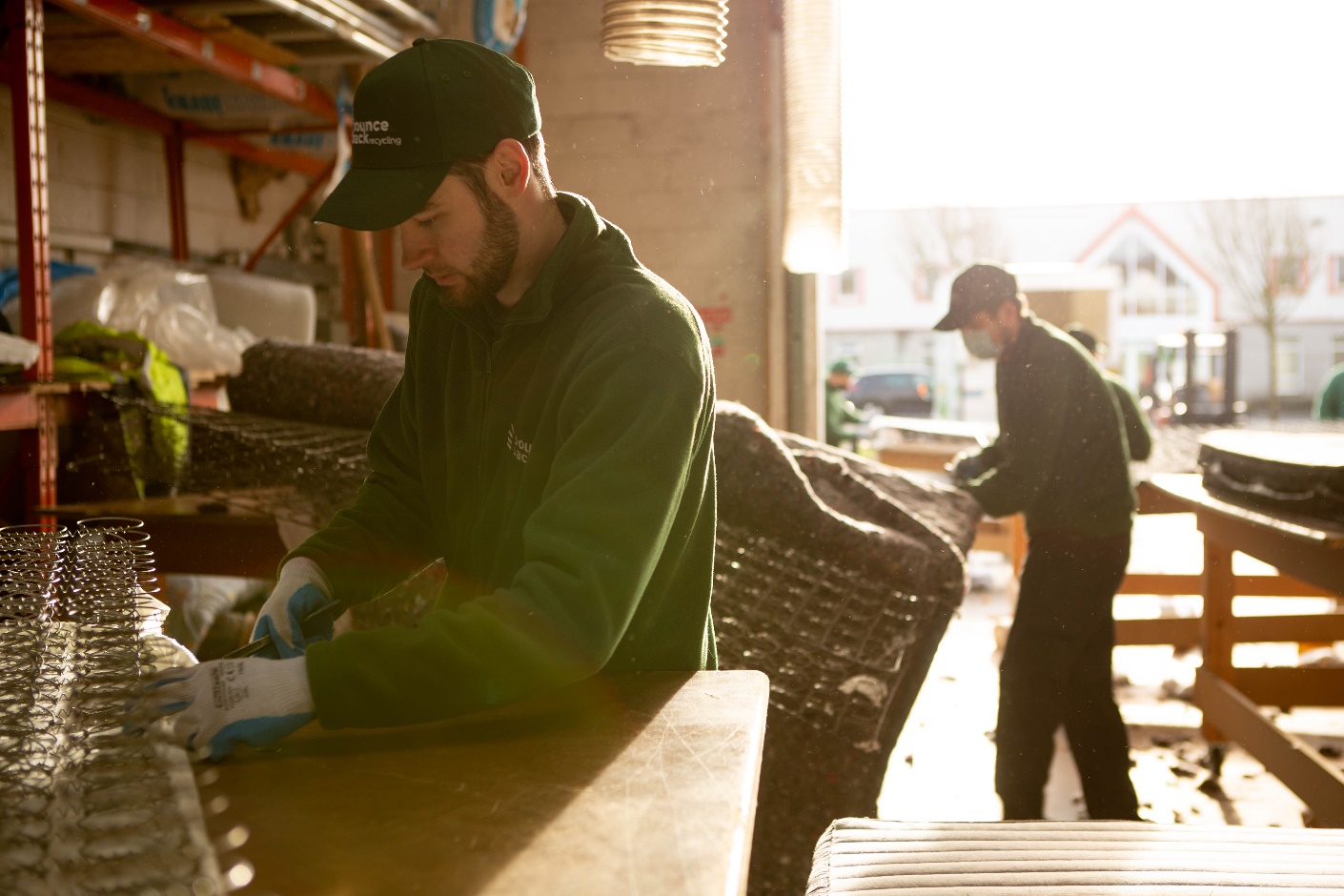No doubt a circular demand creates opportunities for a circular supply. But how is it possible to integrate closed loop criteria in public procurement, a share that represents nearly 14% of the GDP in Europe? To figure it out, Renewable Matter interviewed Helena O'Rourke-Potocki and Simon Clement, respectively Circular Economy and Procurement officer and senior co-ordinator on Circular Economy at ICLEI – Local Governments for Sustainability.
ICLEI is a global network working with more than 2500 local and regional governments committed to driving local action towards a social-ecological transition. In the future, whether purchasing services and products such as buildings, furniture or food, local authorities will need to look for increasingly sustainable supplies.
Helena, sub-national governments are responsible for almost 50% of procurement decisions. Why should local and regional governments abandon their business-as-usual approach to public spending in favour of a circular one?
By procuring more circular goods and services, the cities are sending a signal to the markets. By shifting their budgets, which are now quite high when it comes to sustainable development, public local authorities have the possibility to implement early on in their tenders new environmental laws. That gives businesses security and a direction of travel, allowing them to set up strategies on a long-term horizon. Meanwhile, if we consider that public procurement looks at using resources more efficiently, establishing circular criteria can save taxpayers money. In some cases, it can also lead to positive social effects. In Ireland, for example, a tender process was launched to remove and recycle mattresses from prisons. Two small and medium enterprises were selected, winning the bid also on the promise to employ people that were previously incarcerated. Yes, the main purpose of the tender was recycling mattresses, but with the right criteria, they helped reintegrating ex-inmates into society.
Simon, we have just stressed the importance of sustainable and circular procurement. How does ICLEI work to support this transition?
Being a local government membership organisation promoting sustainability, our first function is to get the best practice exchange between cities at a European level. For example, we are running an initiative called the Circular Cities Declaration where about 67 European cities have signed up committing themselves to pursue the circular transition. What we are trying to do is to make sure that between those cities they are sharing knowledge, including the types of tools that they are implementing to address the challenges they face. Secondly, we are trying to develop direct guidance and assistance for local governments. ICLEI is leading CityLoops, an EU-funded project that aims to develop a series of innovative procedures,open-access and open-source tools to embed circularity within planning and decision-making processes for construction and demolition waste – including soil – and organic waste, two of the most significant urban material flows with a remarkable environmental impact in European cities.
Our third pole of activities is to engage at the policy level. At the European level, we are in regular contact with all the different Directorates-General, promoting both the role and the interests of cities. Like in the case of CityLoops, we try to stand-in for small and medium sized municipalities. They represent the vast majority of urban areas across Europe, those that don't really have the necessary financial or personnel resources, but still have a critical role to play in promoting circularity.
Helena, by definition procurement is the act of obtaining goods or services from external sources. What is required to implement circular procurement?
In some cases, the first step is to have a circular economy strategy. So, having at the macro level a sort of mandate to implement a circular economy helps and gives a signal. Secondly, it is pivotal to communicate and share outcomes and best practices with citizens, businesses, and other authorities. It is also desirable to encourage cross departments dialogue to start developing ambitious criteria and, in second place, to promote working groups or specific training on circular economy to better identify opportunities. Public authorities shall guide the market in the right direction, keeping in mind that the more "circular" suppliers there are the fairest the competition. Thereafter, since public procurement is also a cross-cutting issue and does not necessarily imply buying, the next step would be to look at what the city is already procuring or look at making the most of existing assets within the city. It can be buildings, furniture or infrastructure, but the key is to extend the life of these already existing assets, promoting reuse and refurbishment.
ICLEI is a member of the jury of the Procura+ Awards a recognition that highlights outstanding circular economy applications in the public authority’s procurement. Who are the finalists this year?
First, the shortlisted procured solutions will have a strong potential for replication and scaling up. We have just mentioned that when it comes to procurement it is necessary to look at existing assets. The City of Malmö in Sweden, through the Circular PP project has piloted the procurement of “non-new furniture” for its city hall. The city has now replicated this circular approach to road and navigation signs. The municipality aims to reuse these signs as much as possible, otherwise, the signs are sent back for reuse or redesign to the supplier.
Then we have the town of Quimper, France. They decided to use a circular economy approach in renovating the railway station, reusing on-site as many resources as possible. First pilot project of this kind in Brittany, they identified and integrated reclaimed and reused materials, also from other sites, such as natural stones, cobblestones, and wooden elements, allowing flexibility regarding their non-essential characteristics. Flexibility linked the supply to the availability of reclaimed materials, avoiding emissions from transportation and preserving the embodied carbon and energy of the matter.
Another finalist is the City of Tampere in Finland. They decided to carry out the renovation of one of its main streets using new public circular economy criteria developed together with experts, research programmes and companies as part of the Design&Build operating model. As part of the procurement development, the chosen contractor had to write an environmental plan, to ensure that environmental criteria were really considered. This gives a hint of how, in general, it is fundamental to work with market actors, and experts within the city or the region, such as research institutions, or NGOs indicating what the needs are. But what we are often finding is that the starting point for this will be rather individuals within city administrations who are really interested in trying to push something, especially with smaller scale pilots.
Image: recycling mattresses from prisons, Ireland



